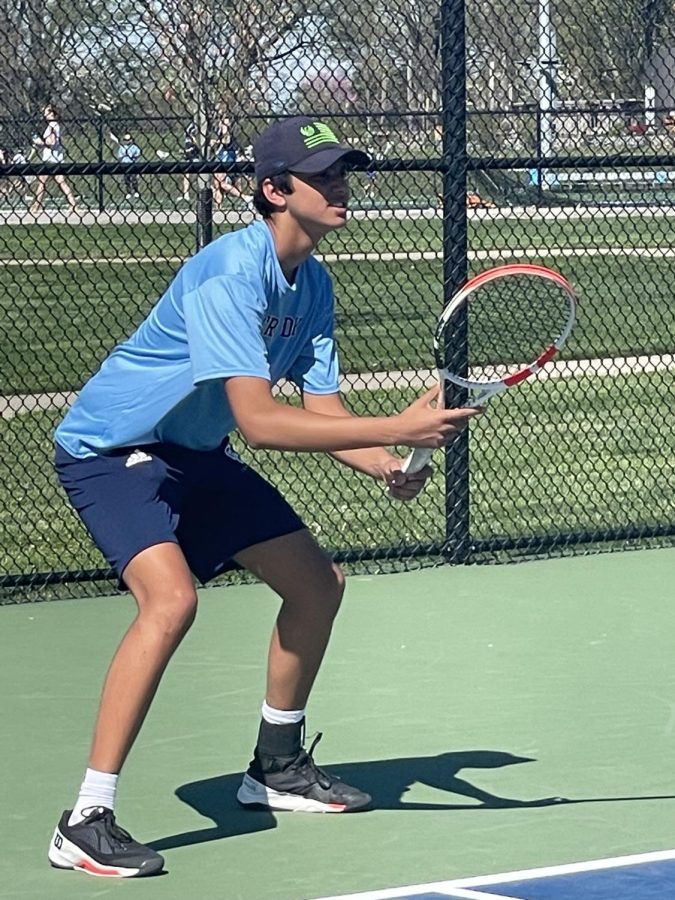By Matt Lesser, ’10, Contributor, and Jules Cantor, ’11, Sports Editor
In the end, it was a computer formula that denied the CCDS football team a chance to play in the post season for the first time since 2002. On Friday night there were eight possible scenarios that would automatically fulfill the Indians’ dreams. In a highly improbable twist of fate, none of those scenarios played out. The Indians themselves lost to CHCA, a team from a higher division. Every other team that was expected to win Friday night also lost, putting Marion Local, a team with a worse final record than the Indians, into the playoffs instead.
In Ohio, postseason teams are selected through a computer rankings system known as the Harbin rankings. The Harbin system is a mathematical formula that benefits teams that play against teams in higher divisions and against teams that have many wins. This system encourages teams to be competitive, and to play sometimes outside their skill level.
The Harbin rankings have four main components: first-level points, second-level points, the divisor, and the average. First-level points are the easiest to calculate and understand. A team gets a set number of points for beating another team, depending on what division that team is in. If the team is in Division I, it receives 6 points; Division II, 5.5; Division III, 5; and so on. Add up the number of first-level points and divide by the number of games played by that team to date. The resulting number is the first component. CCDS received 29.0 first-level points by beating Division III Taylor; Division IV Clermont Northeastern; Division V Oyler, Clark, Summit, and Dayton Christian; and Division VI New Miami. Divide 29.0 by the 10 games the Indians played, and the result is 2.90 points.
Next is the divisor. The divisor is an important number when calculating second-level points. If a team plays 10 games, and all the opponents in those 10 games also play 10 games each, the team’s divisor is 100. If a team plays 10 games, and 9 of those 10 teams play 10 games, and 1 plays 9, the team’s divisor is 99. CCDS’s divisor, for various reasons, including Oyler canceling half its season, was 92.
The third component is second-level points. Second-level points are awarded for the strength of the teams you beat. If a team beats a team that goes 9-1, with all nine wins coming against Division I opponents, it receives 54 points. If the same team beats a team that goes 1-9, with its only win coming against a Division VI opponent, it receives 3.5 points. Once second-level points have been calculated, you divide by the team’s divisor, multiply by 10, and add the result to the first component to obtain the all-important average. CCDS received 72.5 second-level points. Divide 72.5 by 92 and then multiply by 10. The result is 7.8804. Add 7.8804 (second-level points) and 2.9000 (first-level points) to get 10.7804, CCDS’s Harbin average. The teams with the top eight averages qualify for the postseason. The other 24 sit on their couches and sulk, thinking about what could have been.
Now that the system has been explained, let’s talk about how this applies to CCDS’s 2009 season. The Indians are in Division VI, the lowest division, and in Region 24, the Cincinnati area. The top nine teams in Region 24 in 2009, mathematically speaking, were 10-0 Ansonia, 8-1 Lockland, 9-1 Waynesfield-Goshen, 7-3 Sidney Lehman Catholic, 5-5 Maria Stein Marion Local, 8-2 South Charleston Southeastern Local, 8-2 Fort Loramie, 8-2 Covington, and 7-3 CCDS. The Indians, despite having a stronger overall record than Marion Local, did not qualify for the playoffs. Going into Week 10, the Indians needed a multitude of scenarios to go wrong in order to be eliminated. Unfortunately, all those things happened. Taylor lost to Finneytown, CNE lost to Williamsburg, Dayton Christian lost to Troy Christian, and Marion Local, which came into Week 10 with a 4-5 record, defeated Anna High School, which was 8-1. Had any of those outcomes been reversed, the Indians would still be playing football.
The Indians had a remarkable season nonetheless. Looking forward to 2010, the Indians will need to replace five seniors: the prolific RB-WR-Wildcat QB, S, P, K, PR, KR Max Dietz , WR/CB Lawrence Ervin, OT/DT Matt Lesser, G/DE Clint Thomas, and OT/DT Matthew Mack. Players like injured OL/DL Mac McKee ’11, ineligible OL/DL Robert Park, ’11, underutilized OL/DL Mick Abrahamson, ’11, RB/LB Arjun Minhas, ’12, OL/DL Anthony McDaniel, ’12, and OL/LB Russell Patterson, ’12, as well as other returning starters Evan Finch ’12, DeVere Highsmith, ’12, and Ben Valido, ’12, will have to step up and play above their heads next season for the Indians to be successful. The team will rely on the leadership of the returning starters from next year’s senior class. FB/LB Wyatt Tiffany, TE/DE Will Duncan, and safety Will Fritz will be key skill position players, while OL/DL Jules Cantor will be the only returning starting lineman from the Class of 2011. Also of utmost importance will be the steadily improving play of QB Jake Dietz, ’12, the last in the accomplished Dietz bloodline.
Although the 2009 Indians didn’t reach the postseason, that won’t stop all 30 members of this year’s team from patting themselves on the back. In a season in which not much was expected of them, they rose to the occasion, turned heads, and garnered people’s respect. After all, success is not calculated; it’s earned.
Header photo of Wyatt Tiffany by Ilana Habib.






